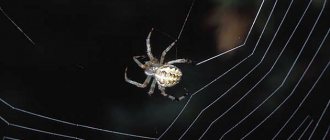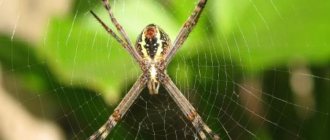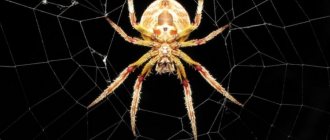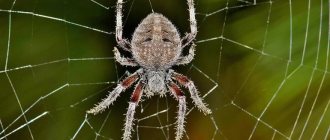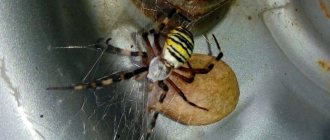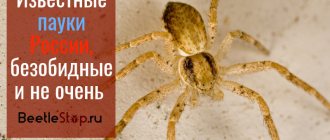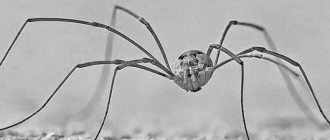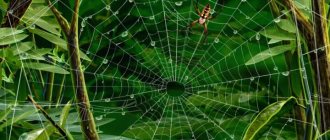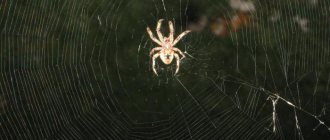Author: Bridge
25 May 2022 21:26
Community: Animals
Tags: drugs, spiders, experiments
25248
8
Zoologist NM Peters and pharmacologist Peter Witt began studying spiders in Germany in the late 1940s. In a series of classic experiments, Witt gives spiders various drugs. In order to inject drugs into spiders, they stuffed flies with them and slipped them into the spiders. After eating the potion, the spiders began to weave webs, the appearance of which interested scientists.
Scientists planned to test how arthropods weave their silk houses under the influence of drugs. As a result of the experiment, it turned out that intoxicated spiders do not stop weaving, but create strange webs. Several other scientists, including NASA researchers, have also studied the effects of drugs on spiders, hoping to find out how it affects the ability to spin webs.
Laboratory with spiders.
0
See all photos in the gallery
×
The marijuana-fed spiders produced some acceptable canvases, but were easily distracted. Under the influence of LSD, unusually smooth webs with precise geometric shapes were obtained. Caffeine had an extremely destructive effect on the spiders - the subjects were unable to create anything other than some random threads. The end result was a most deformed network, even worse than one made with chloral hydrate, which is used in sleeping pills. “Spiders are special, they are perfect for experimenting with drugs because we can see the results almost immediately,” said scientist Martin Croyels (leading arachnologist).
Ten most common myths about spiders
Arachnophobia (fear of arachnids) is one of the most common human phobias. However, most people are afraid of spiders not because they are poisonous or dangerous, but only because they are smaller than other creatures living on our planet, similar to people and simply disgusting. This is probably why there are many myths about them that are passed down from generation to generation. We bring to your attention ten of the most common myths about spiders:
10. Absolutely all spiders weave webs.
You will be surprised, but only half of all known species of spiders use webs to catch prey - all the rest actively hunt, stalking their prey, as most animals do.
There is a type of spider that does not weave a web, but shoots it directly at its prey, or shoots it into the air, and then waits for the prey to fall into it. Representatives of another type of spider - Trapdoor spiders - construct a kind of hatch in which they hide until the prey is within reach. 9. Spiders can live in human hair
The appearance of this myth, popular in the 50s of the last century, is associated with the fashion for tall women's hairstyles with a bouffant, similar to a beehive.
These hairstyles were quite complex and expensive, so it was assumed that women rarely washed or combed their hair, making them ideal nests for spiders. 8. Spiders don't get caught in their webs.
In fact, they can, because they have no immunity to their own stickiness. They just move very carefully along their web so as not to get stuck. In addition, it is not sticky everywhere: some types of spiders, for example, weave webs in which only the circular threads are sticky, and along the ray threads they move unhindered. For a spider to get caught in its own web, it would have to land on more than one drop of glue, which is unlikely. 7. “Don't kill him! Let me better let him out into the street!”
Surely you have heard something like this at least once from a compassionate animal lover.
Don't be fooled by him. The fact is that house spiders (mostly harmless to humans) cannot survive outside - they are adapted to life indoors and will freeze to death outside. Therefore, by releasing them onto the street (even with good intentions), you absolutely doom them to certain death. 6. Spiders can lay their eggs under human skin
Let's dispel this myth too.
Firstly, spiders simply physiologically cannot do this: unlike some types of wasps that lay their eggs inside other animals, spiders simply have nothing to introduce them with. Secondly, spiders care very seriously about their offspring, so they never lay eggs where there is even the slightest threat. They do this in secluded, hidden, protected places. 5. There is always at least one spider within a radius of almost one meter from you
The birth of this myth is associated with the name of archaeologist Norman Platnik.
In one of his articles in 1995, he wrote: “...wherever you are reading this book, there is probably a spider no more than a few meters away from you...”. This statement was perceived as a fact, although the author was simply speculating. Time passed, “a few meters” was replaced by one meter, the word “probably” disappeared altogether, and by 2001 these lines were already quoted as a fact. 4. Female Black Widows (Latrodectus mactans) eat their males after mating.
This is not so much a myth as it is rather misinterpreted information.
The females of some species of spiders of this genus actually eat the males, but this happens much less frequently than many people think. Of all the existing species of spiders of the Black Widow genus, only representatives of some species do this, and then only when hungry (and this, you see, is not uncommon in the animal world). The size of the males of this genus is less than one-fourth the size of the female’s body, and during mating the males must be very close to her mouth, which in turn makes it very difficult to escape (although some still manage to somehow manage to escape). In a word, the rumor about this is greatly exaggerated, and only a few Black Widows succeed in eating males. 3. Over the course of a year, a person accidentally swallows a number of spiders
This myth began because one woman (Lisa Holst) decided to prove that people can believe almost anything they read on the Internet.
Having created a newsletter with false facts (taken from the book “Facts and Fictions about Insects”), she sent it to email addresses and, in principle, proved her point, since this myth is one of the most common. 2. Harvesting spiders have the most potent venom.
You may have heard this myth too: harvest spiders supposedly have the most powerful venom, but they do not have fangs with which to inject it.
We hasten to say right away that “haymaking spiders” do not exist as such - there are a large number of different insects that are meant by this name. Moreover, some of them (such as long-legged mosquitoes or haymakers) are not even spiders, while others have no poison at all. In fact, when talking about hay spiders, people most often mean long-legged spiders (Pholcidae) - they have poison, but it is completely harmless to humans. 1. Everything you know about the camel spider
This myth was circulating on the Internet several years ago. Allegedly, the length of these creatures (they have several scientific names - phalanges, salpugs) can reach 30 cm, they can run at a speed of 40 km/h with screaming sounds, hide on the bellies of camels and are terribly poisonous. There was even a rumor that one such salpuga killed a soldier who served in Iraq. In fact, salpugs (phalanxes), of course, belong to the class of arachnids, but they are not spiders. They rarely reach sizes larger than 15 cm; the fastest representatives of the phalanx squad run at a speed of no more than 16 km/h and are not capable of everything that is said in the myth about camel spiders. But meeting him, of course, is unlikely to make you happy. ...and yes, just in case, look around and see if there is any representative of the arachnid class hanging over you
Spiders don't want to eat us and don't hunt for our food
For the most part, spiders don't want to feed on your blood, your wool sweaters, or your cereal, unlike many other pests that live in your home.
Carrots, radishes and other foods that will help fight the runny nose
Is the decision to introduce the Internet to all schools in Russia safe: the minister’s answer
How to celebrate the Larks holiday (March 22) so as not to attract misfortune
You also won't find them in the water you cook rice in. If you leave spiders alone, they will kill almost every insect in your home.
Web weaving technology
As a rule, many species of spiders prefer to be nocturnal, so they weave their webs mainly at night. On average, a spider spends about an hour on this procedure. If the trap needs to be repaired, it will take even less time.
Below in the video you can see how a spider weaves a web and how long it takes. If the web is torn off, the next morning exactly the same web will appear in the same place. The most beautiful web is made from cobwebs. Using strong threads, the spider forms a triangle, and then fills it with cells of a certain size.
Interesting to know! In the tropical forests of Brazil, there is a tarantula spider that weaves such a strong web that local fishermen use it as nets to catch fish. From spider threads you can weave not only thin, but also quite durable fabric. Some companies make body armor from spider fabric.
In the garden you can see a spider weaving a web and placing it on 2 trees. This could be an openwork fishing net or a funnel that glitters in the sun, attracting insects.
Of course, for many this process remains a mystery. It’s hard to even imagine how the spider managed to stretch its web between two trees. As a rule, the spider flies along the web from tree to tree under the influence of the wind. Having secured the second end, the simplest thing remains - filling the cell space.
At the same time, while in a state of flight, the spider controls the distance to the neighboring tree, while adjusting the length of the web. Sometimes, in order to grab a branch, he simply removes the web in the right place.
You're fighting a losing battle
The final reason you shouldn't exterminate spiders in your home, and the only one that really matters, is that you are fighting a losing war. No matter how many spiders you destroy, they will continue to attack you.
You can take some comfort in knowing that your home isn't the only spider hotel in the world. A 2016 survey found that spiders live everywhere.
But that is not all. On average, each private home contained about 100 different species of arthropods (a group that includes spiders and insects). Are you afraid of spiders?
Found a violation? Report content
Where is it formed and where does it come from?
Spiders and their webs are a unique natural phenomenon in their own way. The weaving process is reminiscent of the production of cotton candy - a pre-mixed composition is pulled out of a narrow opening in the tank and hardens in air in the form of a thin thread.
The container is the animal’s abdomen, and the material is the secretion produced by its internal arachnoid glands.
In the lower part of the spider’s body (opistome) there are from 1 to 4 pairs of growths - arachnoid warts. In some species, these outgrowths are mobile and simultaneously serve as an organ of touch. This is the area where the spider produces its web.
Part of the surface of warts is dotted with small hairs - arachnoid tubes. Each of them is the exit duct of the internal gland and consists of two parts - thick (basal, internal) and thin (formative, terminal). The area with the tubes is called the arachnoid field.
Along with the tubes, chitinous cones, also located on the surface of the warts, participate in the production of the web. Larger glands open in them.
The release of the thread is controlled by the spider's central nervous system. Thickness, stickiness and even shade may vary.
To achieve this, various types of glands are involved in the weaving process, for example:
- tube-shaped - produce threads for the egg cocoon. Males do not have this type of gland;
- ampoule-shaped - produce dry thick threads for the base of the network;
- pear-shaped - strong thin fibers for attaching the web to the base;
- lobular - double silk fiber, the basis of the spiral threads of the fishing net;
- tree-like - they secrete glue to cover the base, which does not harden when in contact with air. With high magnification, droplets will be visible on the threads - the sticky secretion of the arborescent glands. It is on them that moisture concentrates during rain.
Each variety of spider has its own set of glands. Switching from one to the other takes about a minute. The cross spider weaves a web using 6 glands. Its arachnoid warts have from 480 to 560 tubes and about 20 cones.
They are harmless
The next argument in defense of spiders is that they are not aggressive. Spiders avoid people, and arachnologists (people who specifically study them) promise that you will never see most of the spiders that live in your home.
How can a woman keep a man? Advice from Mikhail Zadornov (and the main female mistake)
Making breakfast healthy from your favorite foods, following the example of the British Queen
The animated series "Peppa Pig" will last until 2027, 104 new episodes will be filmed
You'd like to believe them, unless you know about the Sydney funnel-web spider, which is known to attack people and has fangs so sharp they can cut through skin. But unless you live in Australia, you probably don't have to worry.
Don't put them out on the street
Some species of spiders have evolved to live indoors and will not survive outdoors. Most spiders that live in homes were born and raised there and have never lived in the wild. In other words, not only are we now expected to love spiders and not kill them, but we are also expected to happily share our homes with them.
Spring Solstice (March 21): In the old days, people took knives to drive away troubles
Presenter Ivan Urgant was offered to try himself as a political educator
To eliminate “gray” SIM cards, Roskomnadzor wants to know who Russians are calling
Composition of the web
Spiders have special glands that secrete a special secretion. After this substance begins to emerge from the glands, the spider stretches it, giving rise to thin and strong threads. As a result of curly weaves, a fairly strong structure is obtained. This secret is intended for various purposes, including construction.
The basis of this building material is protein combined with alanine
, serine and glycine. Inside the arachnoid gland, the substance is in liquid form. After the substance is used in the form of threads, it hardens in air.
Spider glands in the form of warts are located near the genitals. The thread consists of crystalline protein, which significantly increases the strength and flexibility of the dried threads. Depending on the purpose of the tape, its thickness and strength can vary greatly.
Interesting fact! The web is the same as that of nylon. At the same time, it retains its characteristics both under compression and tension. If you hang an object on a long net and rotate it in one direction, the net will not get tangled and will not offer any resistance to the rotation. Thanks to these unique properties of the web, the spider can hang in the web for a long time. The web is not only strong, it is quite lightweight, so spiders often use the web to travel long distances under the force of the wind.
A spider can crawl into your mouth at night
Fried spiders are a popular dish in Cambodia and if you surf the internet you will find recipes for making tarantula. However, to cook it, you will have to catch it first.
Despite the popular belief that a spider may crawl into its mouth while sleeping, most house spiders will stay away from you, waiting for dinner to fall into their web.
In addition, people who sleep with their mouths open often snore. Spiders are sensitive to sounds and will rush to leave a room with a “working sawmill.”
